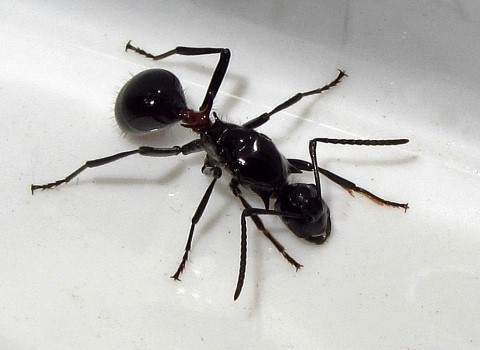
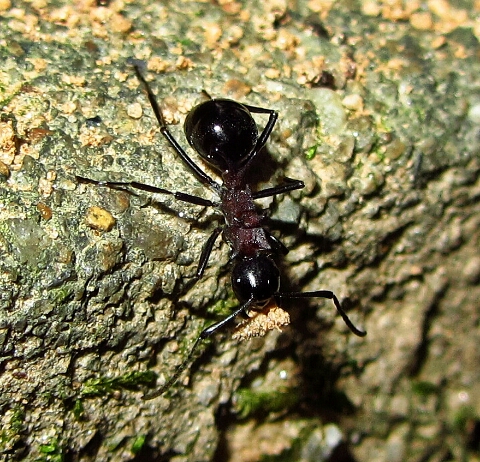
Edited by GAEME, December 16 2014 - 4:50 AM.
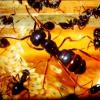


Edited by GAEME, December 16 2014 - 4:50 AM.
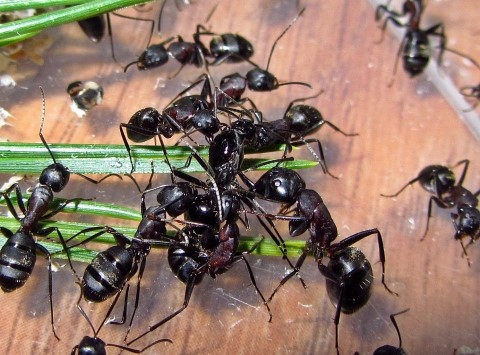
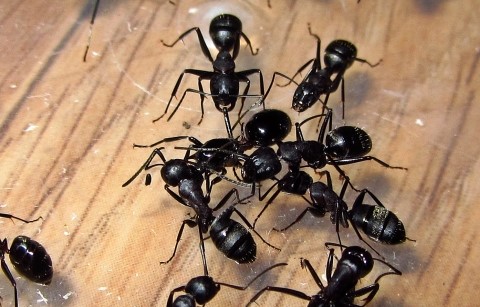
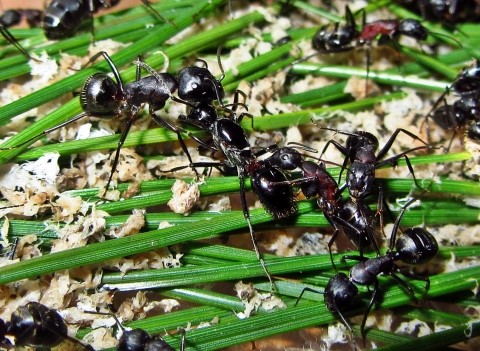
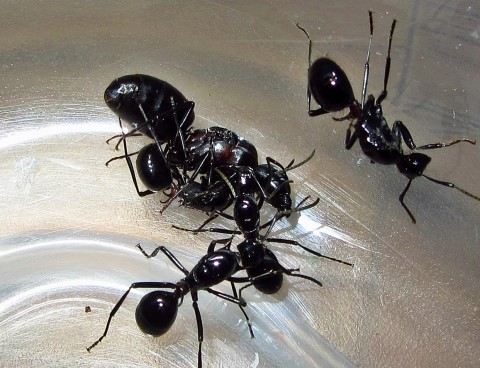
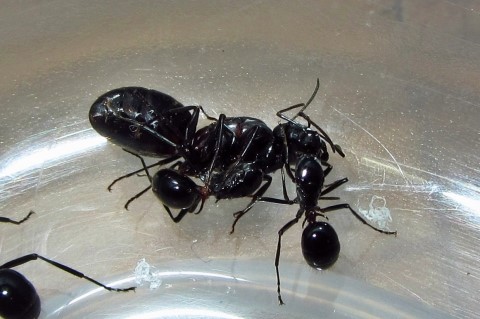
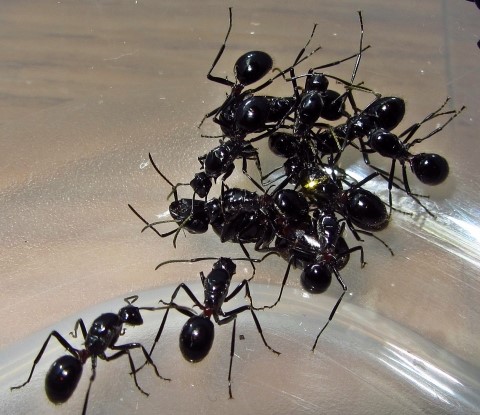
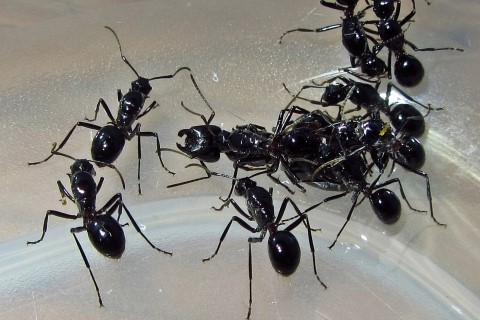
Amazingly, the P. queen wasn't dead, and the P. queen stick to C. atrox queen's coxa.
So I take out both of them from the C. colony, and put them to small case with 42 additory P. lamellidens queens.
Edited by GAEME, December 10 2014 - 7:02 PM.
Hello GAEME, and welcome to this forum.
I have a request - Please edit your text a little. It is difficult to know which queens you refer to in your sentences, so you need to put species names before each use of the word "queen".
Also, could you please clarify what happened to the Camponotus queen. Was she a colony mother? Why put all those Polyrhachis queens in with her?
Edited by James C. Trager, December 10 2014 - 10:51 AM.
Okay, I will. Thank you for advice.
Polyrhachis queens are parasitic to Camponotus queen.
Korean ant keepers call Polyrhachis queen's parasitization process as 'Pheromone Copying'.
(It looks like 'copying', but we don't know what happens scientifically.)
Sticking to Camponotus queen, Polyrhachis queens lick Camponotus queen's body and rub their antennas to Camponotus queen's antennas.
Camponotus queen is dead while Polyrhachis queens are copying Camponotus queen's pheromone.
After 'Copying', Polyrhachis queens pretend to be a Camponotus queen.
Camponotus workers give a lot of food to their 'fake mothers', and the fake mothers produce lots of eggs.
Ohhhh! So what you are doing by putting the dead queen into the bin with 43 parasitic queens is so all of them copy the pheromones of that one queen, so you do not have to waste another queen. Genius. ![]()
<2014.10.23.>
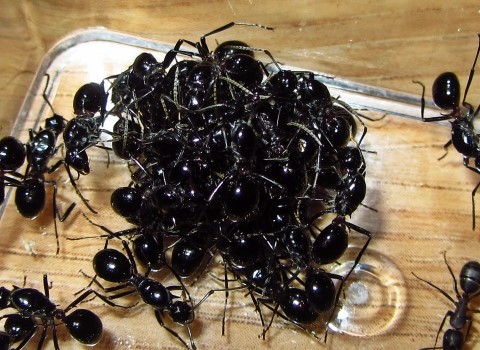
Sticking to a Camponotus queen, Polyrhachis queens copy Camponotus queen's pheromone.
(It looks like soccer ball... ![]() )
)
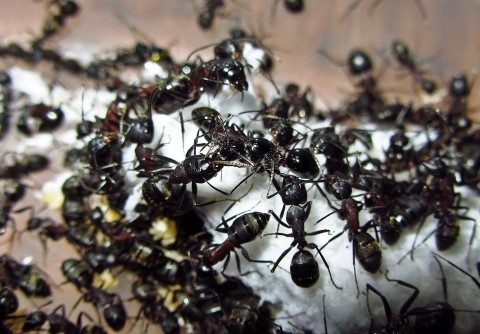
After copying, Polyrhachis queens pretend to be a Camponotus queen, and get lots of food from Camponotus workers.
*larvae looked on this picture are Camponotus's larvae.
Edited by GAEME, December 10 2014 - 7:01 PM.
Are they polygynic? Because a colony with 43 producing queens would be quite impressive.
Thanks for that clear explanation, GAEME. I understand quite well now. Fascinating what you have learned about rearing this unique Polyrhachis species.
Wow, I've never heard of this method for introducing parasitic queens by North American ant keepers. I wonder if it would work with other parasitic species to increase acceptance in a simulated environment.
A colony with 43 queens...
Holy moly.
Wow, I've never heard of this method for introducing parasitic queens by North American ant keepers. I wonder if it would work with other parasitic species to increase acceptance in a simulated environment.
I am not sure that this could be replicated with more than a handful of species in North America... I know many of the parasitic queens in Canada are very territorial and if more than one are introduced they will fight. Even ones that supposed welcome back the daughter alate queens after a flight. Many of the parasitic queens seem to be programmed to kill any queen in the nest.
Even many of the non-parasitic species up here will see the queens fight shortly after the workers start to eclose.
I have never heard of anything like this before. It is quite interesting, I am curious to see how the colony does over the next 2-3 years.
"Always do right. This will gratify some people, and astound the rest." -- Samuel Clemens
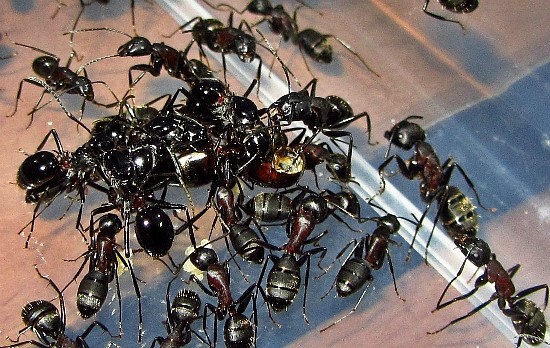
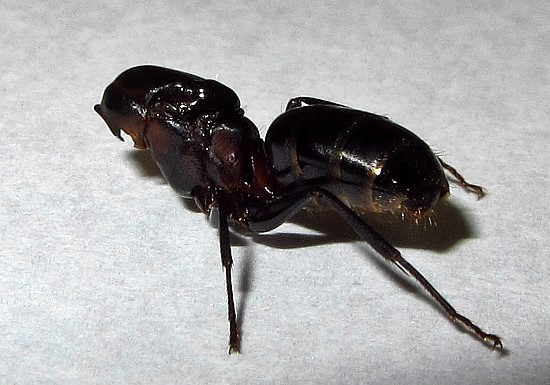
This is Camponotus queen's cadaver. Its head was seperated from its body during the paratization.
Most of Polyrhachis queens finished 'pheromone copying', but some Polyrhachis queens are sticking to Camponotus queen's cadaver to copy Camponotus queen's pheromone.
*If they can't copy enough pheromone from Camponotus queen, they can copy pheromone from Camponotus workers or other Polyrhachis queens having finished pheromone copying - Polyrhachis queens don't kill Camponotus workers or other Polyrhachis queens during pheromone copying. Becasue of that, we should be careful not to leave Polyrhachis queens without Camponotus queen before pheromone copying.
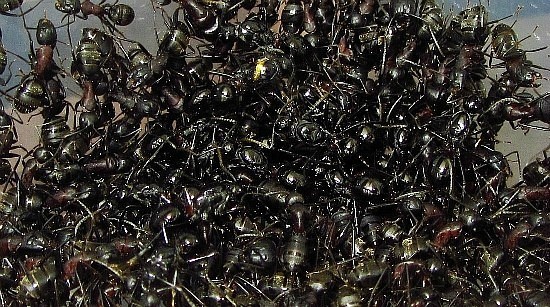
This is Polyrhachis queens having finished pheromone copying and Camponotus workers&soldiers.
Edited by GAEME, December 11 2014 - 10:30 PM.
Poor Camponotus queen. ![]()
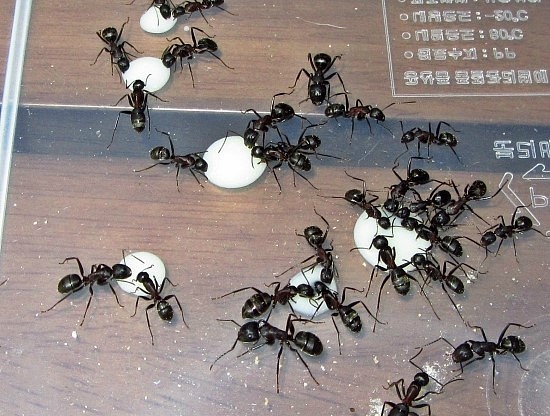
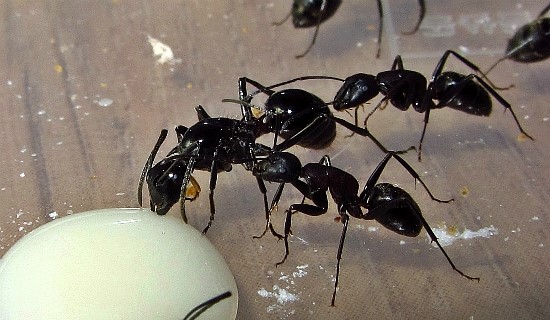
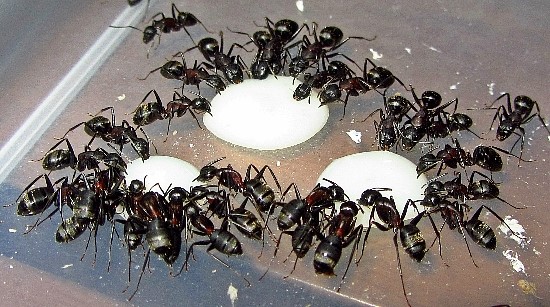
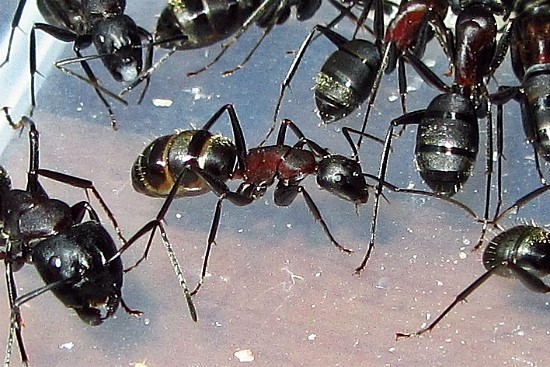
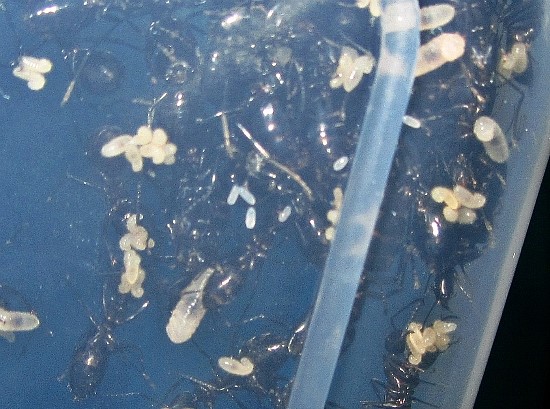
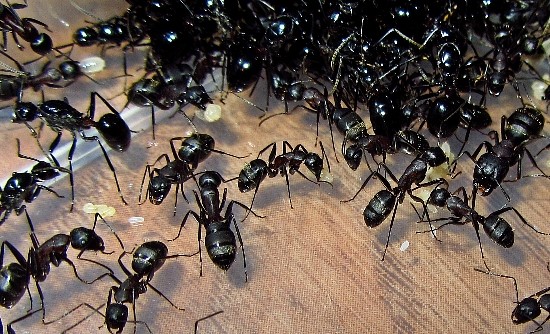
That is awsome! Are these slave makers or parasites?
Yes, Polyrhachis lamellidens is parasitic on Camponotus's colony.
You can see P. queens and C. workers on those pictures.
P. workers might hatch next year.
They're temporary parasites, Gaige, the mixed species condition only existing during colony founding stage. In time all the Camponotus host workers die off.
![]() Franz
Franz
if you find any mistakes, it's my autocorrection. it doesn't speak english.
 |
Ant Keeping →
General Ant Keeping →
How to Professionally Heat my Ants?Started by Entomologyants , Mar 25 2025 |
|

|
|
Ant Keeping →
General Ant Keeping →
What just happened here? Tetramorium immigransStarted by Stubyvast , Feb 16 2025 |
|

|
||
Ant Keeping →
Ant Keeping Journals →
bmb1bee's Cryptic Colonies (updated 17 Feb. 2025)Started by bmb1bee , Dec 2 2024 |
|

|
||
Anting →
Ant ID Requests →
ID wantedStarted by cooIboyJ , Oct 1 2024 |
|

|
||
Ant Keeping →
General Ant Keeping →
Beginner Ant keeperStarted by Camponauto_desperado , Sep 13 2024 |
|

|
0 members, 1 guests, 0 anonymous users